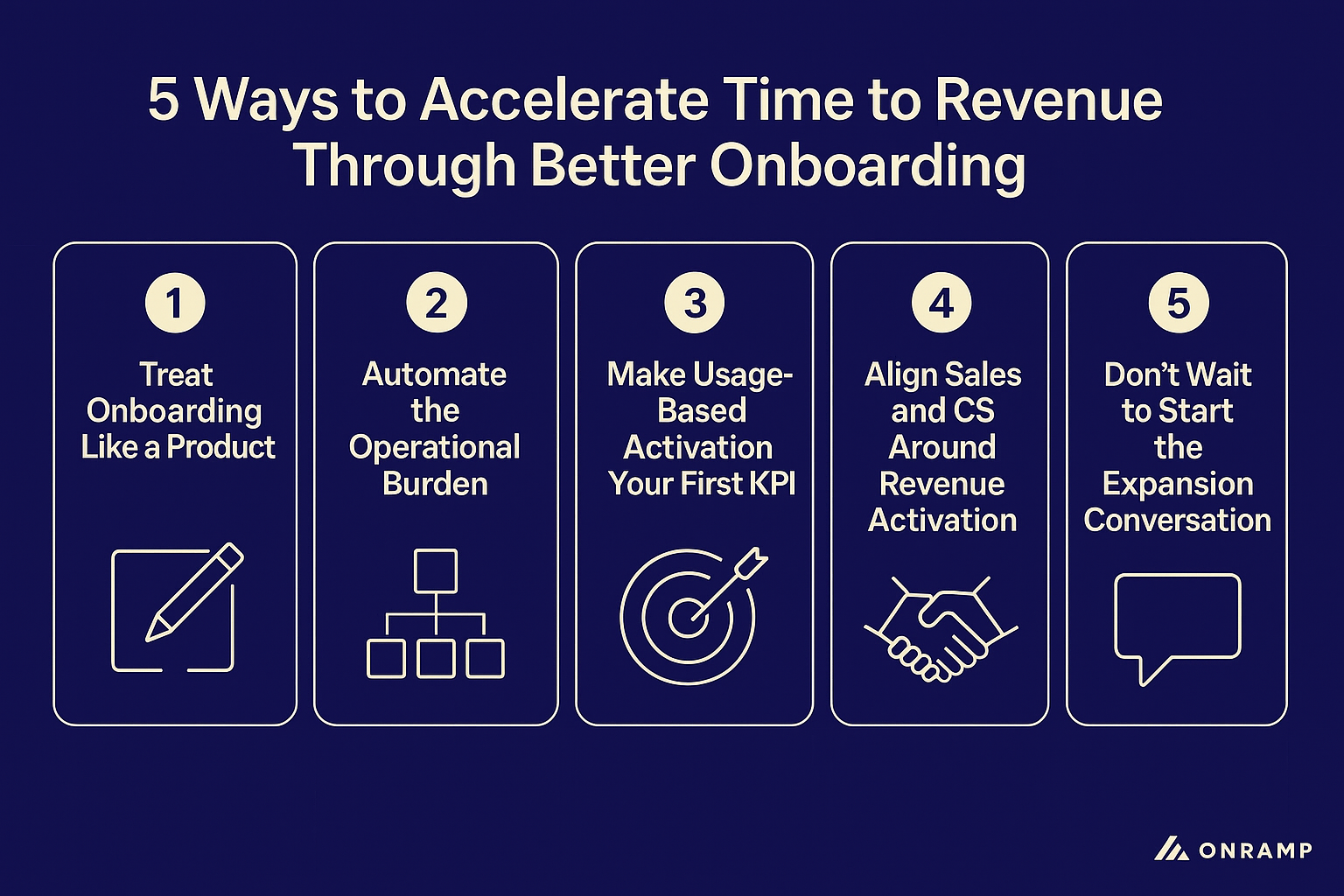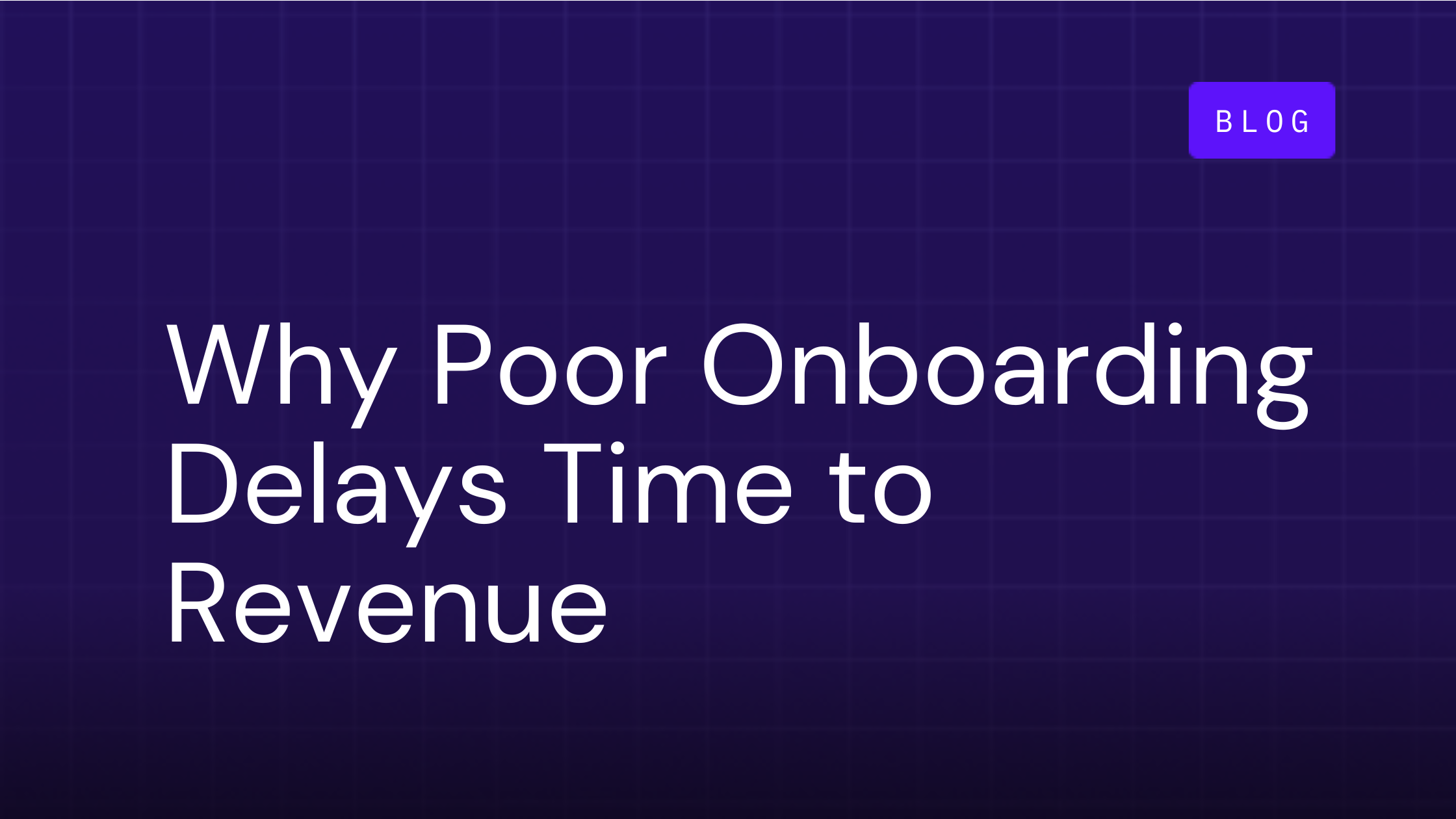In consumption-based SaaS models, onboarding isn’t just a box to check. It’s the fuse that ignites the revenue engine. Until your customer is up and running, you're stuck in limbo and so is your revenue.
You can’t recognize new business.
You can’t upsell.
And you definitely can’t prove value.
Yet onboarding is often treated as an operational chore, rather than a strategic priority.
Let’s break that mindset and show how improving onboarding can accelerate revenue in ways your CFO will love.
The Revenue Blocker No One Talks About
In traditional subscription models, companies can start recognizing revenue as soon as the contract is signed, but they still risk revenue leaks from early friction, drop-offs, and missed expansion. In consumption-based models, where customers pay based on usage, transactions, or API calls, revenue doesn’t begin at all until actual usage kicks in.
And activation, let alone usage and adoption, doesn’t happen without onboarding.
Whether your customer is an enterprise integrating your platform via an API or a startup self-serving directly through your UI, delays are delays. And delays in onboarding universally mean:
- No revenue is recognized
- No upsell conversations make sense
- No usage data to inform customer health or product decisions
- No measurable ROI for the customer
Onboarding = Revenue Enablement
Think of onboarding as your revenue gatekeeper.
When it's slow, manual, or confusing, your time to revenue stretches. Your margin for error shrinks. And your sales team has to work twice as hard to re-engage accounts that should already be paying.
But when onboarding is fast, clear, and repeatable, everything changes. You:
- Recognize revenue sooner
- Create a foundation for healthy, growing accounts
- Accelerate time to value (and proof of value)
- Empower CS teams to focus on impact, not chasing tasks
Now multiply that across all new customers, and the business case for pulling this revenue lever is compelling.
5 Ways to Accelerate Time to Revenue Through Better Onboarding

1. Treat Onboarding Like a Product
Your onboarding process is part of your product experience. It should be as innovative and intentional as your product development focus. Treat it with the same care: design it, test it, and optimize it.
Build a standardized flow, but allow for light customization. The goal? Help customers reach first value without friction, at scale.
2. Automate the Operational Burden
The more time your CS team spends managing spreadsheets, copying tasks, or chasing emails, the slower your customers move, blocking their success and your revenue.
Automate task delivery, reminders, and progress tracking. Use a dedicated onboarding platform or portal (not internal PM tools) so customers can follow their path clearly and complete it faster.
3. Make Usage-Based Activation Your First KPI
In consumption models, "go live" isn’t just about setup, it’s about usage.
Shift onboarding KPIs to focus on time-to-usage. What’s the smallest measurable action that unlocks revenue? Make that your north star.
4. Align Sales and CS Around Revenue Activation
If Sales is selling consumption, CS should be accelerating it.
Build shared dashboards around onboarding progress and time-to-first-usage. Celebrate early activation wins as revenue wins, because they are.
5. Don’t Wait to Start the Expansion Conversation
Many teams wait until onboarding ends to talk upsell. That’s too late.
If onboarding leads to usage, usage should lead to insights. If your customer starts to outgrow their initial package during setup, that’s a trigger for a usage-based upsell conversation. Don’t miss it.
Final Thought: Onboarding Is the First Revenue Moment
In a consumption-based world, you’re not paid for signing deals. You’re paid for driving adoption.
If you want to grow revenue faster, stop asking, “How do we close more?” and start asking, “How do we get customers using and paying faster?”
The answer almost always starts with onboarding.
Frequently Asked Questions on Time to Revenue

